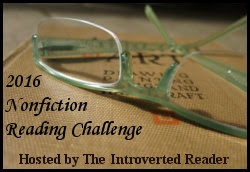Porter (Classic Beer Style Series 5) by Terry Foster
Date read: 28-31 January 2016
My rating: 4 of 5 stars
Challenges: 2016nfc

Paperback, vii, 134 pages
Published 1992 by Brewers Publications
Source: Own
This is an excellent book! The reason I gave it 4 stars is that the discussion of commercial beers and ingredients available to homebrewers (as in Pale Ale) suffers from age and the march of time.
In the author’s defense I just pulled his Brewing Porters & Stouts from my shelf to read next and its copyright date is 2014. I am so utterly happy at this moment! In the introduction to this he addresses these issues as primary motivators for wanting to revisit the topic.
Table of Contents
- Dedication
- About the Author
- 1. A History of Porter
- 2. Profile of Porter
- 3. Porter Brewing – Raw Materials and Equipment
- 4. Porter Brewing Procedures
- 5. Porter Recipes
- 6. Commercially Available Porters
- 7. Further Reading
- Glossary
- Index
Commentary
1. A History of Porter includes Origins, The Nature of Porter, Growth of Porter and its Brewers, Porter Brewing Outside of London, and The Decline of Porter.
“The history of porter and the men who made it is fascinating, for it deals with the part that beer has played in the development of Western Culture. Conversely, of course, much of porter’s growth was the result of profound changes in the nature of British society. It is also a microcosm of how our industries has developed; events in porter’s history explain the structure of the modern brewing industry, not only in Britain, but in the other major Western countries.
Porter is intimately tied in with the Industrial Revolution, in which Britain led the world. Through the growth it enabled the brewers to achieve, it was instrumental in the development and technological application of a number of important scientific advances” (Foster, Porter, 17).
2. Profile of Porter includes Porter, and Aroma and Flavor of Porter.
“Personally, I would prefer to think of porter as one beer with a whole continuum of roasted malt flavors” (52).
3. Porter Brewing – Raw Materials and Equipment covers Ingredients (Malt, Hops, Yeast, Water) and Equipment. Malts discusses Pale Malt, Crystal Malt, Malt Extract, Chocolate Malt, Black Malt, Roasted Barley, Wheat Malt, Sugar, Flaked Maize, and Flaked Barley.
He is not for all of those and tells us why he is for each ingredient (and in what amounts) or why not.
Dr. Foster, while admitting that porter fermented with lager yeasts exists, really does not want to talk about it. I really don’t have an issue with that for a couple reasons: a) I mostly agree, although I have had a few tasty lager yeast-based Baltic porters; b) I can find those recipes and procedures elsewhere. His reasoning seems to primarily be that “[t]he original and most modern versions use top-fermenting yeasts” and, more importantly, “that there is little doubt that porter is at its best when one of its flavor aspects is a fruitiness due to the presence of esters” (68). I do like some fruitiness in my porters.
4. Porter Brewing Procedures covers Extract Brewing, Grain Mashing, Wort Boiling, Fermentation, Secondary Fermentation and Cellaring, Packaging, and Serving.
5. Porter Recipes
There are seven recipes for a range of porters. Each recipe includes ingredient lists for extract and all-grain batches of 5 gallons along with all-grain for 1 barrel.
6. Commercially Available Porters
Only covered a few American and British porters as they were not widely available when this was written. This section is about half historical commentary at this point.
7. Further Reading
He provides a “limited number of references” for assorted reasons (121). His newer book does a bit better in this regard, going so far as to include the many books used “that are either out of print or very difficult to find” (121).
His recommended starting points are:
Jackson, Michael, The New World Guide to Beer, 1988, Running Press Book Publishers, Philadelphia, Pennsylvania.
Corran, H. S., A History of Brewing, 1975, David & Charles Inc., North Pomfret, Vermont.
Final comments
All in all, a good book but I am most thankful that he has published an updated work which includes his newer research and observations on the availability of commercial versions and better brewing ingredients. It also has the added bonus, in my opinion, of covering stouts. As he writes in the Introduction to Brewing Porters & Stouts:
“While I was busy amassing ream upon ream of notes about porter brewing in the past, modern craft brewing caught up with me as there was a revolution in brewing this style of beer, as well as a huge expansion in the range and quality of brewing ingredients available. It was soon clear to me that there was a need to redo the porter book. But this time, I wanted to not only include results from my research, but also include stouts, since there are really only derivatives of the original porters” (1).
“Hear! Hear!,” Dr. Foster. Stouts are my end of the porter spectrum and the further down that spectrum the better. I can see reasons for separating them in various style guidelines—useful purposes can be served—but, historically, this seems a better treatment, at least in a work like this. Or perhaps it is simple greed as I want to know what Terry Foster has to say on stouts.
I read this as a recommended book for studying for BJCP certification. I am participating in a study group beginning in early March and going for 12 weeks. I am the #1 standby on the wait list and I am assured several people do not show up for the exam so I hope to be taking the tasting exam in July.
The post Foster – Porter (Classic Beer Style Series 5) appeared first on By the barrel.






















